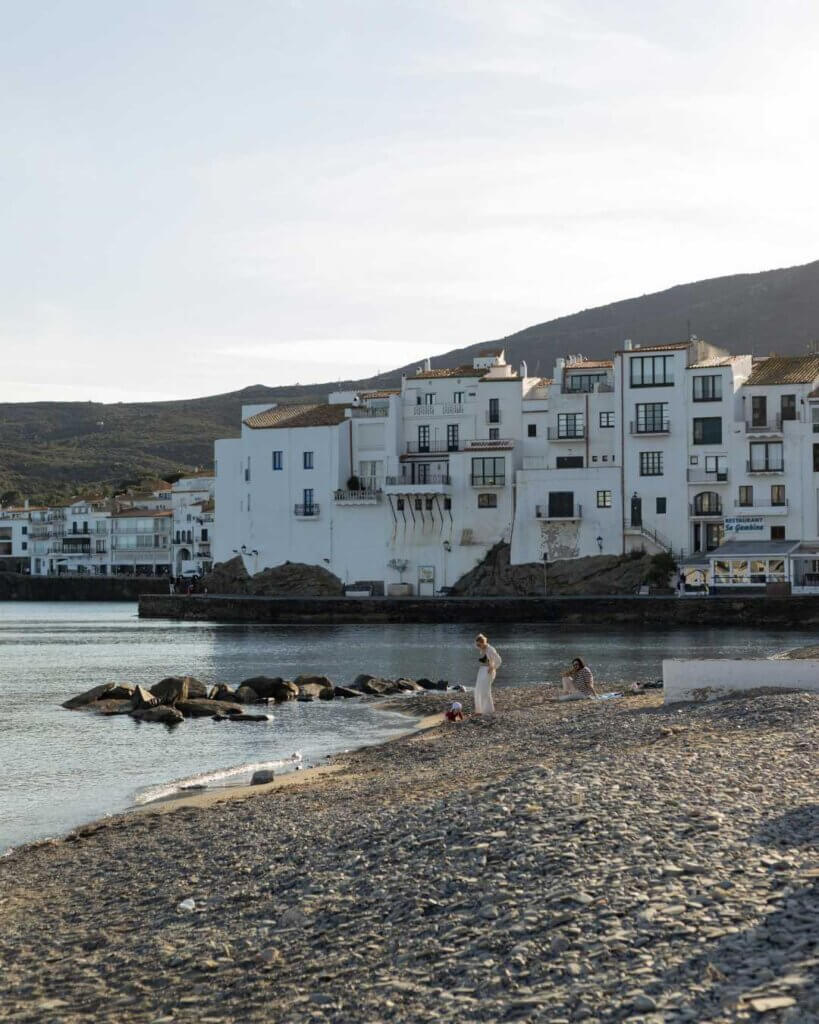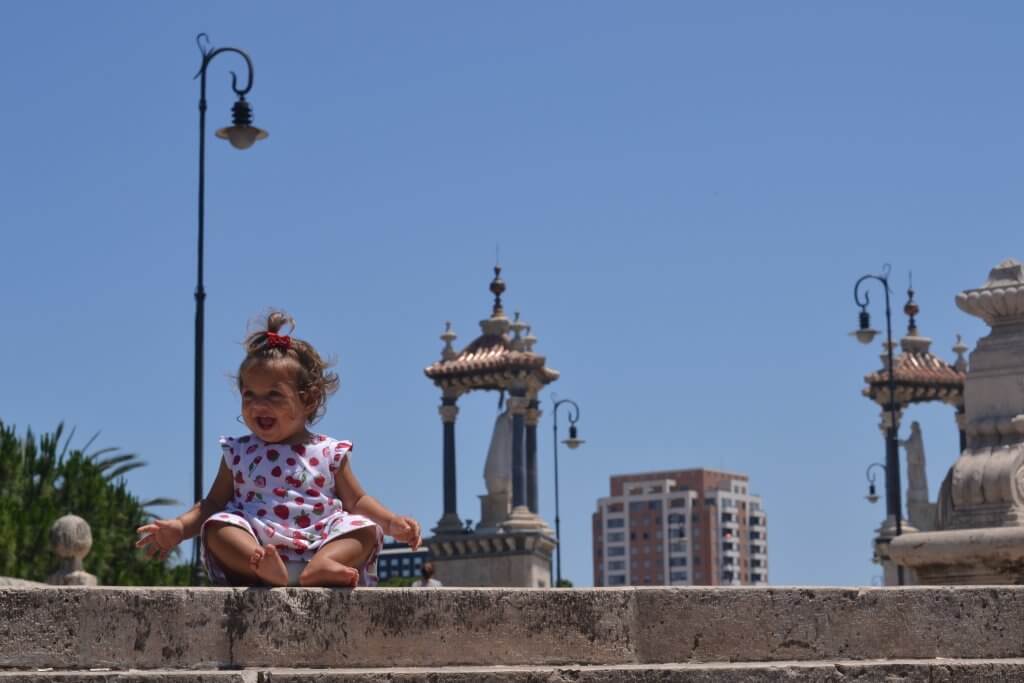Absolute things to do in Barcelona surroundings

This article is for you if you have booked a holiday, but you want to escape from the city and see something different, perhaps less touristy, if you don’t know what to do in Barcelona surroundings you have certainly come to the right place.
We tak about
ToggleMonths wouldn’t be enough to visit Barcelona and discover all its places, attractions, restaurants, and bars. But for a taste of Catalan life beyond the metropolis, or simply to slow down the pace of a vacation that risks becoming too chaotic, within a short distance, you have a wide choice of mountains, beaches, and charming towns near Barcelona to visit. .
Read on to discover the best trips out of town and specifically what to do in Barcelona surroundings.
What to do in Barcelona surroundings
As always in the columns signed by the Miniwanderlust Team ‘Things to do in the surroundings of,’ I divide the locations between those closest and those that require more than an hour’s drive, but for which the journey is absolutely worth it.
Among the must-do excursions if you want to escape from Barcelona, within an hour’s drive , you’ll find some of Catalonia’s most authentic destinations.
What to do in Montserrat: Exploring the sanctuary
The mountain of Montserrat ospita il luogo più sacro della Catalogna, l’omonimo monastero, non si trova negli immediati dintorni di Barcellona, ma dista circa 50 km dalla città ed è la montagna più importante dell’area.
The highest peak barely exceeds 1,200 meters, and from some points, on clear days, you should be able to see the Balearic Islands.
At the foot of the mountain lies the Benedictine monastery of Santa Maria del Montserrat, which you can visit inside for free.
We suggest you reach Santa Cova, where the sacred effigy of the Virgin, La Moreneta, was found, either by funicular or on foot. Alternatively, you can hike to the top of Sant Jeroni for a splendid view of the valley below.
Avoid visiting Montserrat in July and August unless it’s a cool day because the heat can be really scorching.
How to get to Montserrat
FGC trains on the R5 line depart every half-hour or hourly from Plaça d’Espanya. Once you arrive, take the AERI cable car from the Montserrat Aeri stop to reach the monastery. Alternatively, take the R5 to the next stop (Monistrol de Montserrat), from where the cremalleras ascend to the monastery (20 minutes) every 20-40 minutes. las cremalleras salgono al monastero (20 minuti) ogni 20-40 minuti.
Collserola Park: a must-see in Barcelona surroundings
Barcelonans escape to the gigantic Parc de Collserola, on the hill whenever they need a break from city life. If you and your kids are tired of the metropolitan chaos of Barcelona, this destination is perfect for you.
The Collserola Natural Park is located north of Barcelona and covers an area of 8,465 hectares. Given its size, it is called the natural lung of Barcellona, a true oasis in the midst of one of the most populated areas of the entire Mediterranean coast. These characteristics make Collserola the largest metropolitan park in the world.
The park offers numerous activities to satisfy all ages and preferences. There are pedestrian paths (ideal for Sunday strolls or with children) , bike paths, and hiking trails (ideal for the more sporty), all very well signposted. There are various picnic area in the green (with tables, benches, and baskets) and several points of interest. Walking through the woods, you can reach lakes, waterfalls, old springs, and buildings, with refreshment options in kiosks and restaurants hidden among the trees. There are so many attractions and paths available that listing them all is practically impossible. For this reason, I leave you the link to the Diputaciò de Barcelona website: a website where you can view all possible itineraries,divided by duration and difficulty.
Among the common destinations, I suggest:
- the Torre de Collserola, a telecommunications tower inaugurated in 1992 on the occasion of the Olympics. Standing 268 meters tall and therefore visible from all of Barcelona, it is located on Turò de la Vilana, next to Tibidabo. You can climb to the top via an external glass elevator: on clear days, the view from above is breathtaking, you can see Montserrat and even the Pyrenees.
- Another destination (which is however a route) is the Carretera de las Aguas: completely closed to car traffic, this road winds for several kilometers through the greenery, and in several points, you can enjoy beautiful and natural panoramas.
- Finally, I point out the Vallvidrera Park, only 6 stops away by Ferrocarril from Plaça de Catalunya.
How to get to Collserola
Take the FGC suburban line from Plaça de Catalunya, Carrer de Provença, or Gràcia to Baixador de Vallvidrera.
Discover the natural beauty of Sitges: beaches and relaxation in Barcelona surroundings
Sitges, with its pristine colors, is perfect for strolling along the promenade and enjoying the sun. The beaches are numerous and in summer they are bustling with tourists, but there are many other interesting things to visit in Sitges, which remains just a few kilometers away from Barcelona.
If you love contemporary art and Modernism, don’t miss a visit to the historic center, where you will find elegant palaces and plenty of museums. The city is also famous for its nightlife and for being an LGBTQ+ destination, so leave all prejudices behind before coming here.
Sitges also hosts one of the most spectacular carnivals in Spain (dates change every year), definitely a must if you are in Barcelona during this period.
How to get to Sitges:
From 5:00 am to 10:00 pm, there are numerous trains departing from Barcelona Passeig de Gràcia and Sants. Monbus also departs from Barcelona
Adventure in Montjuïc: panoramic views and family attractions
Montjuïc, along with Tibidabo, outlines the hilly promontory that dominates the city of Barcelona. A place rich in history, cultural testimonies, local customs, a place that tells the authentic Barcelona, the one that maintains historical roots and delivers them to us and then after us to the new generations. It is the heart of the city, to the southwest of Barcelona, Montjuïc, whose original name has given rise to various etymological interpretations. According to some, the name derives from medieval Catalan and therefore could be translated as “Jewish mountain.”According to another convincing interpretation, Montjuïc would derive from the Latin Mons Jovicus , meaning hill consecrated to Jupiter.
The splendid Montjuïc Castle is actually an ancient fortification erected for defensive purposes, later transformed into a castle in 1694 by the Bourbons. It was also used as a prison, until the period of General Francisco Franco’s dictatorship, and for this reason, it witnessed many executions during the Spanish Civil War. Today, the castle hosts exhibitions and events of contemporary art and is worth a visit even just for the fantastic viewpoint over the coast (Mirador del Migdia and Mirador de L’Alcalde). To visit the interior, rooms, and prison cells, you need to purchase a ticket.
The Montjuïc Cable Car is the best way to enjoy the best views of Barcelona. It serves to reach the castle comfortably aboard comfortable cabins. The cable car makes three stops before reaching the top: Parc Montjuïc, Mirador, and Montjuïc Castle.
How to get to Montjuïc
There are several ways to reach the top of Barcelona, at Montjuïc: from Plaça de Catalunya, you can take bus number 55 to climb the hill. Alternatively, you can take the metro from Parallel, and then the Funicular to Parc de Montjuïc.
Explore history in Tarragona: A journey into the Roman past in Barcelona surroundings
If you want to dive into Roman history, you can’t miss Terragona, a former Roman fortress in the immediate Barcelona surroundings.
Since the Museu d’Història de Tarragona, which includes the main Roman sites, tends to be busier from mid-morning onwards, it’s best to start with its Amfiteatre Romà and Fòrum Provincial first, or the excellent Museu Nacional Arqueològic de Tarragona, which provides an overview of the city’s impressive Roman past.
While in Tarragona, a visit to its imposing cathedral is a must: with its Gothic arches, sandstone statues, and charming flowered cloisters, the church effectively exemplifies the variety of architectural styles that have shaped the city over the centuries. The building is adorned with beautiful sculptures and polychrome stained glass windows, as well as perfectly manicured gardens.
To learn more about the cathedral’s long history and features, grab the audio guide available at the entrance. You could easily lose yourself for hours admiring every single detail. Before leaving, climb to the top of the bell tower for an extraordinary view of the city of Tarragona.
Another must-see stop is the Roman Circus: built in the 1st century AD, it was the city building intended for chariot races. Given its exceptional state of preservation, a visit to this monument is indispensable for enthusiasts of ancient history, and you can rest assured it won’t disappoint: you can walk through the spacious covered corridors, where horses and charioteers awaited their turn before the races, and admire the artifacts preserved in the museum area. And before leaving, don’t forget to climb to the top of the stands to enjoy the spectacular sea view. The archaeological site is located right in the center, just a short walk from the equally unmissable Roman amphitheater.
The beautiful Central Market also cannot be missed in your itinerary (remember that it is closed on Sundays). The lively Mercat Central de Tarragona still retains all the spirit of past markets. Inaugurated in 1915 to bring together the stalls of the vendors who were previously scattered throughout the city, it’s the perfect place to relax after a day spent visiting monuments.
How to get to Tarragona:
The train station is a 10-minute walk south of the historic center, near the beach, with services to/from Barcelona.
What to do in Barcelona surroundings more than an hour away from the centre
The next destinations are a bit further from the city center, but they are still worth considering during your trip to Barcelona.
Immerse yourself in culture in Figueres: museums and surrealistic art nearby Barcelona
There are many things to see in Figueres: it boasts beautiful examples of modernist architecture, an imposing 18th-century castle (Castell de Sant Ferran), and a delightful toy museum, the Museu del Joguethowever, the attraction that has made it so famous is the Teatre-Museu Dalí.The former theater was transformed by Dalí himself into a palace of surrealism, protected by high red walls surmounted by giant eggs, statues resembling Oscars, and chalk croissants. Inside, you will find paintings, a collection of jewelry designed by Dalí, and some fun trompe l’oeil installations. The ticket for the Teatre-Museu Dalí also includes admission to the Museu de l’Empordà, one of the best museums of art and archaeology in the region.
How to get to Figueres
The Figueres railway station, 800 m southeast of the center, is connected by trains departing or arriving from Barcelona every half hour.
Admire the beauty of Girona: medieval city and enchanting atmosphere
he historic center of Girona is a concentration of ancient palaces, arcades, wonderful churches, sloping cobbled streets, dominated by the majestic image of the cathedral. Until the expulsion of the Jews in 1492, Girona was home to a huge Jewish community, and the Museu d’Història dels Jueusnetells the story.
If you visit Girona for the day, you can’t miss the Banys Àrabs (“Arab Baths”) dating back to the 12th century, chosen as the setting for the filming of the TV series Game of Thrones, and the Romanesque monastery Monestir de Sant Pere de Galligants.Take a stroll along the Onyar River to admire the colorful houses lining it or to reach the newer part of the city, great for a snack or a couple of tapas.
How to get to Girona
To reach Girona, take the train from Barcelona, with departures at least every half hour.
Alternatively, there is also the bus. The bus journey time between Girona and Barcelona is approximately 1 hour and 20 minutes, covering a distance of about 97 km. Operated by BlaBlaCar Bus, FlixBus, and Sagales. From Girona to Barcelona, the bus service departs from Girona and arrives at Estación de Autobuses, Barcelona North
.
At the border with France: the town of Cadaques
Cadaqués is a small village of white houses, an ancient fishing port, which changed a lot in the 1960s and 1970s when Dalí moved there and it began to be frequented by the international jet set. Definitely a place to visit near Barcelona. The small bay of Port Lligat with Dalí’s museum house is located 1 km north of Cadaqués and can be easily reached on foot. Dalí spent more than half of his life in this house, from 1930 when he bought it, which was little more than a fisherman’s house, until his death in 1989.
Tossa del Mar and the beaches of the Costa Brava, a must-visit in Barcelona surroundings
The in Costa Brava stretches from Balnes (about 60 km north of Barcelona) to the border with France and includes the famous resort of Lloret de Mar (which is the only one I would recommend skipping altogether!). The latter, along with Roses, which is closer to the border, is a resort that is simply overrun by tourists (especially English). However, in Costa Brava there are really many beautiful scenarios and many bays of incredible beauty, both for landscapes and beaches. The best way to explore it is undoubtedly by car. More specifically, I recommend visiting the town of Tossa de Mar, with the old town protected by magnificent medieval walls and many beautiful beaches nearby (especially Platja Gran and Cala Es Condolar). Proceeding along the coast to the north, the bays and beaches of Calella de Palafrugell, Llafranc, Tamariu, and Aigua Blancaare also beautiful. In the same area, you will also find the interesting ruins of Empúries, the first and one of the most important Greek colonies in Spain.
Personally, I consider this to be the most beautiful area to visit among all the Barcelona surroundings listed in this article.
Visit Catalonia, find out what to do in Barcelona surroundings
As I have said many times, months are not enough to visit just Barcelona, but in any case, if like us, you want to experience Catalonia beyond its lively and fascinating metropolis, in this article, you have undoubtedly found many interesting stops for what to see near Barcelona.
You definitely won’t be able to visit them all, but there is always a great reason to return to Spain.
Personally, my advice is to visit these areas by car as there are wonderful places that are difficult to reach, especially with kids.
For further information about our road trip in Spain, I refer you to the section where all the blog articles are enclosed for your holidays in Spain with kids.
I hope with this article on what to do around Barcelona I have been useful for planning your next Catalonia holiday with children.
Digitally Yours
☀️ Sara ☀️



